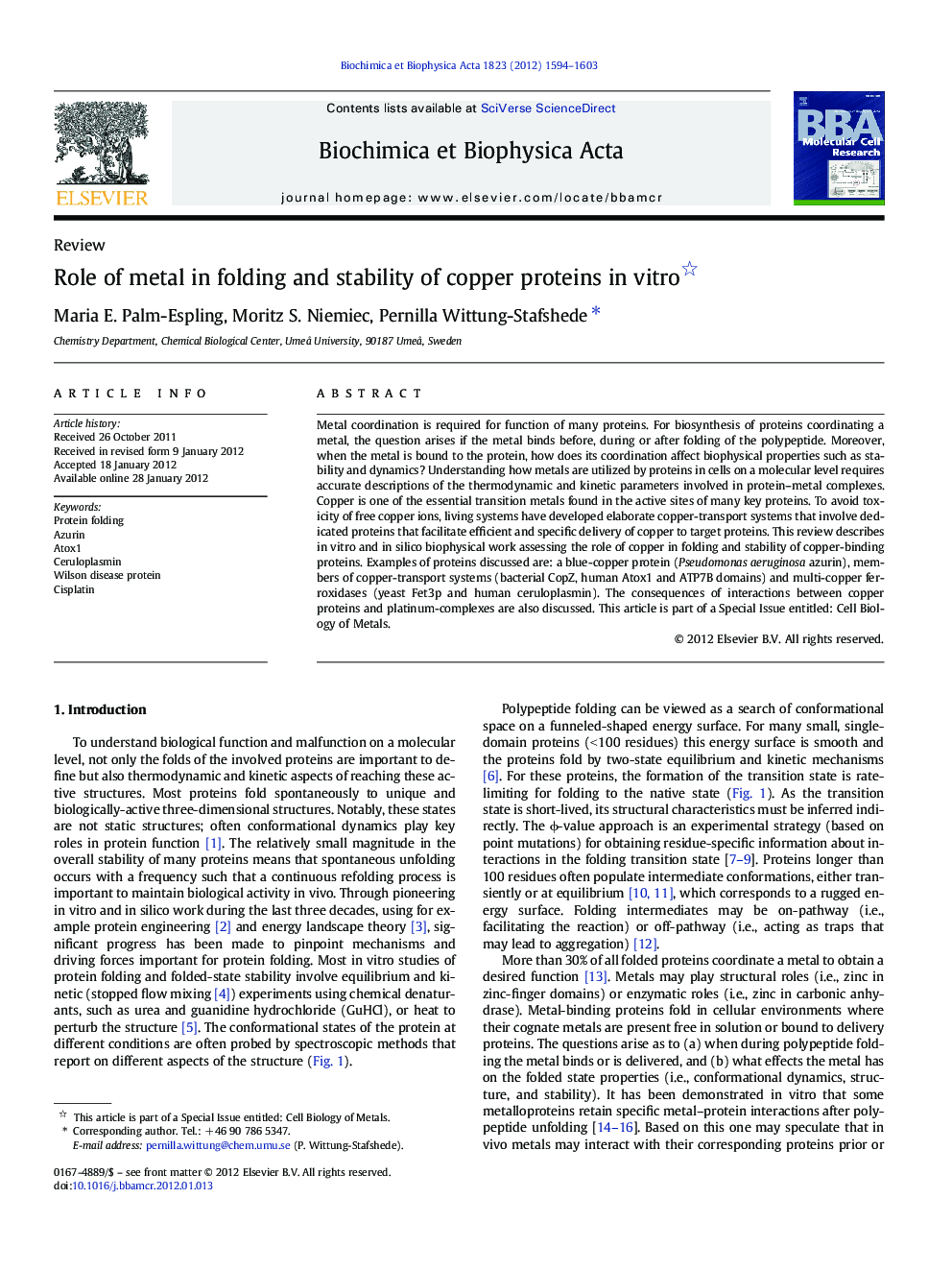| کد مقاله | کد نشریه | سال انتشار | مقاله انگلیسی | نسخه تمام متن |
|---|---|---|---|---|
| 1950716 | 1055692 | 2012 | 10 صفحه PDF | دانلود رایگان |

Metal coordination is required for function of many proteins. For biosynthesis of proteins coordinating a metal, the question arises if the metal binds before, during or after folding of the polypeptide. Moreover, when the metal is bound to the protein, how does its coordination affect biophysical properties such as stability and dynamics? Understanding how metals are utilized by proteins in cells on a molecular level requires accurate descriptions of the thermodynamic and kinetic parameters involved in protein–metal complexes. Copper is one of the essential transition metals found in the active sites of many key proteins. To avoid toxicity of free copper ions, living systems have developed elaborate copper-transport systems that involve dedicated proteins that facilitate efficient and specific delivery of copper to target proteins. This review describes in vitro and in silico biophysical work assessing the role of copper in folding and stability of copper-binding proteins. Examples of proteins discussed are: a blue-copper protein (Pseudomonas aeruginosa azurin), members of copper-transport systems (bacterial CopZ, human Atox1 and ATP7B domains) and multi-copper ferroxidases (yeast Fet3p and human ceruloplasmin). The consequences of interactions between copper proteins and platinum-complexes are also discussed. This article is part of a Special Issue entitled: Cell Biology of Metals.
► In vitro thermodynamic and kinetic observations are complementary to structural and functional data.
► If copper binds prior to folding, active protein is formed 3 orders of magnitude faster.
► Conserved residues in Atox1 increase stability, add flexibility and guide target interaction.
► Multi-copper oxidases unfold via intermediates and the copper ions are removed in steps.
► The cancer agent cisplatin interacts with Atox1 and triggers slow protein unfolding.
Journal: Biochimica et Biophysica Acta (BBA) - Molecular Cell Research - Volume 1823, Issue 9, September 2012, Pages 1594–1603